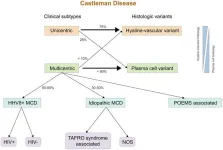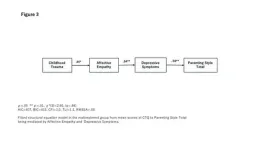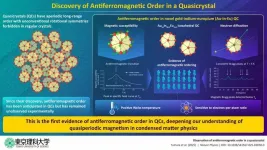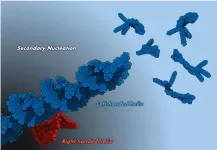Protein GSK3β offers new angle on overcoming melanoma drug resistance
“Inhibitors of GSK3β reduce the cell viability of BRAFi-resistant melanoma cell lines and thus may holds promise as a novel strategy to overcome BRAFi resistance and melanoma progression”
2025-04-11
(Press-News.org)
“Inhibitors of GSK3β reduce the cell viability of BRAFi-resistant melanoma cell lines and thus may holds promise as a novel strategy to overcome BRAFi resistance and melanoma progression.”
BUFFALO, NY – April 11, 2025 – A new research perspective was published in Oncotarget, Volume 16, on April 4, 2025, titled “GSK3β activation is a key driver of resistance to Raf inhibition in BRAF mutant melanoma cells.”
In this work, first author Diana Crisan and corresponding author Abhijit Basu from the University Hospital Ulm led a team that presents experimental evidence pointing to the protein GSK3β as a key contributor to drug resistance in melanoma. Their findings suggest that GSK3β becomes increasingly active in cancer cells during treatment, helping them survive and adapt despite ongoing therapy with BRAF inhibitors.
Melanoma is a type of skin cancer in which nearly half of patients have mutations in the BRAF gene that accelerate tumor growth. While treatments targeting BRAF, known as BRAF inhibitors, initially work well, tumors often find ways to fight back. This research perspective explores how GSK3β, a protein involved in metabolism and cell survival, becomes more active in melanoma cells that develop resistance to BRAF inhibitors.
Researchers treated melanoma cells with a common BRAF mutation using Dabrafenib, a widely used BRAF inhibitor. Over time, the cancer cells developed resistance and showed a marked increase in GSK3β levels. This pattern was confirmed across multiple melanoma cell models, suggesting that the finding is consistent and reliable.
Importantly, the researchers observed that treating resistant cancer cells with a GSK3β inhibitor significantly reduced their growth. This result suggests that blocking this protein could restore sensitivity to treatment, highlighting GSK3β as a promising therapeutic target and supporting the idea of combining GSK3β inhibitors with existing melanoma therapies.
“Remarkably, treatment of BRAFi-resistant melanoma cells with the GSK3 inhibitor LY2090314 for three weeks could overcome resistance and significantly decreased melanoma cell growth, confirming the causal role of GSK3 activation for BRAFi resistance development.”
The research perspective adds to ongoing efforts to understand and overcome melanoma drug resistance. It shows that resistance is not driven only by genetic mutations but may also involve adaptive changes in the cell’s internal signaling and survival mechanisms. By identifying GSK3β as a potential contributor, the authors offer a new direction for improving the durability of targeted treatments in melanoma.
As research continues, GSK3β may be a critical factor in the long-term success of melanoma therapy, particularly for patients who have stopped responding to standard BRAF-targeted drugs.
Continue reading: DOI: https://doi.org/10.18632/oncotarget.28711
Correspondence to: Abhijit Basu — abhijit.basu@alumni.uni-ulm.de
Keywords: cancer, BRAF melanoma resistance mechanisms, GSK3 β, BRAF mutation
Click here to sign up for free Altmetric alerts about this article.
About Oncotarget:
Oncotarget (a primarily oncology-focused, peer-reviewed, open access journal) aims to maximize research impact through insightful peer-review; eliminate borders between specialties by linking different fields of oncology, cancer research and biomedical sciences; and foster application of basic and clinical science.
Oncotarget is indexed and archived by PubMed/Medline, PubMed Central, Scopus, EMBASE, META (Chan Zuckerberg Initiative) (2018-2022), and Dimensions (Digital Science).
To learn more about Oncotarget, visit Oncotarget.com and connect with us on social media:
X
Facebook
YouTube
Instagram
LinkedIn
Pinterest
Spotify, and available wherever you listen to podcasts
Click here to subscribe to Oncotarget publication updates.
For media inquiries, please contact media@impactjournals.com.
END
[Attachments] See images for this press release:
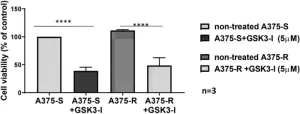
ELSE PRESS RELEASES FROM THIS DATE:
2025-04-11
Castleman disease (CD) is a rare, non-clonal lymphoproliferative disorder that manifests with a wide range of histologic and clinical features. It is classified clinically into unicentric (UCD) and multicentric (MCD) forms and histopathologically into hyaline vascular (HV-CD), plasma cell (PC-CD), and mixed types. UCD typically presents as an isolated lymph node enlargement, often asymptomatic, whereas MCD involves multiple nodal sites and systemic symptoms. MCD may be associated with human herpesvirus 8 (HHV8), idiopathic origins (iMCD), POEMS syndrome, or TAFRO ...
2025-04-11
Where does the deep sea begin? Definitions vary across science and legal frameworks. For the purposes of their joint analysis, the members of the European Marine Board’s (EMB) Deep Sea and Ocean Health Working Group defined the deep sea as the water column and seabed below 200 metres. Below this point, sunlight barely penetrates the water, and the habitat changes dramatically. According to this definition, the deep sea accounts for about 90 per cent of the ocean’s volume. Its importance for ...
2025-04-11
Childhood maltreatment (CM) is a complex issue that is often passed on through generations. Studies have shown that parents who were abused as children may perpetuate a similar pattern of mistreating their children, creating a vicious cycle of abuse. A key factor in perpetuating this cycle is impaired empathy in parents who grew up in abusive environments. Simply put, parental empathy, the ability to understand and respond to children’s emotions, plays a critical role in effective parenting. In fact, children who experience abuse tend to have reduced empathy by the age ...
2025-04-11
Quasicrystals (QCs) are fascinating solid materials that exhibit an intriguing atomic arrangement. Unlike regular crystals, in which atomic arrangements have an ordered repeating pattern, QCs display long-range atomic order that is not periodic. Due to this ‘quasiperiodic’ nature, QCs have unconventional symmetries that are absent in conventional crystals. Since their Nobel Prize-winning discovery, condensed matter physics researchers have dedicated immense attention towards QCs, attempting to both realize their unique quasiperiodic magnetic order and ...
2025-04-11
Although we know that supermassive black holes (millions of times the mass of our Sun) lurk at the centre of most galaxies, their very nature makes them difficult to spot and study. In contrast to the popular idea of black holes constantly ‘gobbling up’ matter, these gravitational monsters can spend long periods of time in a dormant, inactive phase.
This was true of the black hole at the heart of SDSS1335+0728, a distant and unremarkable galaxy 300 million light-years away in the constellation of Virgo. After being inactive for decades, it suddenly lit up and recently began producing unprecedented flashes of X-ray light.
The first signs ...
2025-04-11
Self-assembly or self-organization in molecular science refers to the phenomena where molecules spontaneously gather and form ordered structures, a unique property of materials used to develop optical and electronic materials. In a step towards fine-tuning this property, researchers from Japan successfully elucidated a technique where a small amount of residual aggregates drastically altered the self-assembly process of photo-responsive molecules. The research team was led by Professor Shiki Yagai from the Graduate School of Engineering, Chiba University, including Assistant Professor ...
2025-04-11
CAMBRIDGE, MA -- Bacteria can be engineered to sense a variety of molecules, such as pollutants or soil nutrients. In most cases, however, these signals can only be detected by looking at the cells under a microscope or similarly sensitive lab equipment, making them impractical for large-scale use.
Using a new method that triggers cells to produce molecules that generate unique combinations of color, MIT engineers have shown that they can read out these bacterial signals from as far as 90 meters away. Their work could lead to the development of bacterial sensors for agricultural and other applications, which could be monitored by drones or ...
2025-04-11
Capturing carbon dioxide (CO₂) from industrial emissions is crucial in the fight against climate change. But current methods, like chemical absorption, are expensive and energy-intensive. Scientists have long eyed graphene—an atom-thin, ultra-strong material—as a promising alternative for gas separation, but making large-area, efficient graphene membranes has been a challenge.
Now, a team at EPFL, led by Professor Kumar Agrawal, has developed a scalable technique to create porous graphene membranes ...
2025-04-11
Researchers have developed a simple and cost-effective blood test capable of detecting Parkinson’s disease long before symptoms emerge, comparing the current state of diagnosing neurodegenerative diseases to the fight against cancer 50 years ago—when most cases were identified too late for effective treatment. The test quantifies specific RNA fragments in the blood, focusing on a repetitive RNA sequence that accumulates in Parkinson’s patients and a parallel decline in mitochondrial RNA, which deteriorates as the disease progresses. By measuring the ratio between these biomarkers, the test offers a highly accurate, non-invasive, rapid and affordable diagnostic tool, ...
2025-04-11
A novel paper led by Dr Ulrich Brose of the German Centre for Integrative Biodiversity Research (iDiv) and the Friedrich Schiller University Jena is widening understanding of how species interact within ecosystems via the so-called “Internet of Nature.” Published in Nature Ecology and Evolution, the paper reveals that species not only exchange matter and energy but also share vital information that influences behaviour, interactions, and ecosystem dynamics – revealing previously hidden characteristics of natural ecosystems.
Traditionally, ecological studies have ...
LAST 30 PRESS RELEASES:
[Press-News.org] Protein GSK3β offers new angle on overcoming melanoma drug resistance
“Inhibitors of GSK3β reduce the cell viability of BRAFi-resistant melanoma cell lines and thus may holds promise as a novel strategy to overcome BRAFi resistance and melanoma progression”

